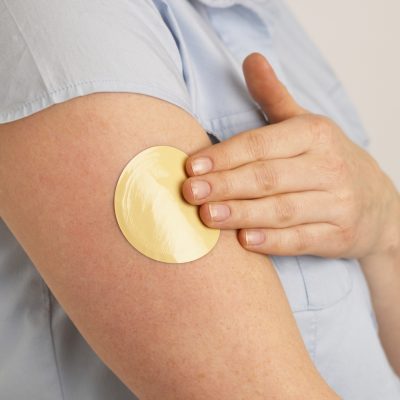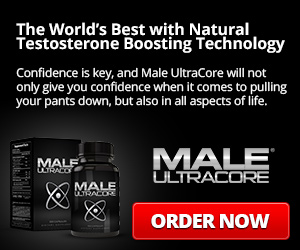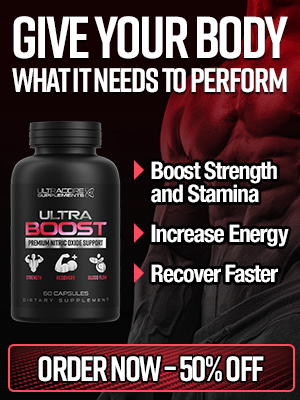Testosterone is the principal anabolic steroid and primary male sex hormone responsible for the development of sex organs in men. It aids in the production of male reproductive tissues like prostate and testes. Testosterone also helps in developing the physical attributes of men, such as the muscle, bone mass, and growth of body hair. During puberty, the level of testosterone in a man is at its peak. He begins to crave sex, produce fresh sperm every day, and even strip him of excess fat. It is also essential to know that testosterone has effects on the mood of men, such as irritability, anxiety, and depression. High or low testosterone is regarded as abnormal and out of balance, affecting the mental and physical health of a man.
How Testosterone is Controlled
Controlling the level of testosterone in your body is significantly connected to maintaining healthy levels in the blood. However, it is perfectly normal for your levels to spike up in the mornings and fall later on. The pituitary gland and the hypothalamus are responsible for controlling the amount of testosterone produced by the testes. The pituitary glands primarily produce luteinizing hormone as a result of a response to the gonadotrophin-releasing hormone gotten from the hypothalamus. This luteinizing hormone begins to move in the bloodstream to the gonads and starts stimulating the release and production of testosterone.
As the blood levels of testosterone start to rise, the production of the gonadotrophin-releasing hormone is suppressed from the hypothalamus, which then contains the pituitary glands from producing luteinizing hormone. As a result of this, the testosterone levels begin to decrease, and so negative feedback falls, and the hypothalamus continues in its production of the gonadotrophin-releasing hormone.
What happens when you have too much Testosterone?
Both age and sex are a determinant on the type of effect that testosterone would have on you. It is quite rare to see a man suffering from high testosterone levels because it is doubtful for men to develop the disorder.
 However, in younger children, the upper level; of testosterone can lead to a growth spurt and early puberty experience. In both genders, excessive testosterone levels can lead to infertility and precocious puberty.
However, in younger children, the upper level; of testosterone can lead to a growth spurt and early puberty experience. In both genders, excessive testosterone levels can lead to infertility and precocious puberty.
For women, excess testosterone levels may be an indication of polycystic ovary syndrome. As a result of this, she begins to develop acne, facial and body hair, also known as hirsutism, male pattern baldness, and increased muscle mass and a deepened voice.
Some causes of high testosterone levels are androgen resistance, ovarian cancer, and congenital adrenal. The use of a manufactured androgenic hormone known as anabolic steroid stops the release follicle-stimulating hormone and luteinizing hormone from the pituitary glands. As a result of this, the level of testosterone and sperm produced in your body decreases. Men who are exposed to anabolic steroids for too long often have infertility, shrinkage of the testes, and a lowered sex drive and libido. Women who also take anabolic steroid for a prolonged period also suffer from virilization or masculinization
What happens when you have low testosterone levels?
During fetus development, if there is a lowered testosterone level, then the fetus would not develop properly. If testosterone levels are reduced during puberty, the boy’s growth might be slowed down, or he may not even experience any growth spurt. The child might have trouble in the full development of facial or body hair, penis and testes, and a deepened voice. Their legs and arms might even outgrow the rest of their body and have lessened strength and endurance.
In men, low testosterone levels can lead to loss of hair, reduced muscle mass, and wrinkled skin appearance. They can also start to experience changes in mood, excess weight gain or obesity, lack of firm erections, difficulty in memory and concentration, sleeping difficulties or sleep apnea and poor performance during sex. Research has shown that the primary cause of a lowered testosterone level is as a result of aging. Other causes include injury or infection to the testes, obesity or excess weight gain, excessive smoking, excess consumption of alcohol, chemotherapy for cancer, and diseases like diabetes and tumors.
Testosterone Replacement Therapy
Testosterone replacement therapy is the additional testosterone being added to a man’s body, basically to heighten the level of testosterone in his body. This treatment is used for men with low testosterone levels, a condition known as hypogonadism. Hypogonadism is a condition that occurs when the primary sex organ of a man cannot produce enough testosterone. This is either a result of dysfunctional testes or when the pituitary glands and hypothalamus do not respond correctly. The pituitary glands and the hypothalamus are both responsible for the production of hormones that stimulates the secretion of testosterone in the testes.
The primary purpose of testosterone replacement therapy is to heighten the level of testosterone in men. By doing this, the male characteristics and a man’s sex drive is restored.
Who makes use of testosterone replacement therapy?
Testosterone replacement therapy is a treatment used to treat men who have been diagnosed with hypogonadism accurately. For a man to be diagnosed with hypogonadism, he must have clinical symptoms of low testosterone levels like loss of body hair and increased breast growth and low testosterone levels.
Who cannot make use of testosterone replacement therapy?
Testosterone levels reduce naturally in men as they begin to age; this is called male menopause or andropause. As a result of this, these men can have clinical symptoms of testosterone deficiency or even low blood testosterone levels. Research has shown that testosterone replacement therapy has little effect on men who their primary cause of lowered testosterone levels is aging. Treatments that affect the tissue, causing a reduced testosterone level, might be more effective. Other types of men who cannot engage in testosterone replacement treatment include competitive athletes, men who suffer from prostate or breast cancer, trauma, and erythrocytosis.
Treatment outcomes and goals
The main aim of testosterone replacement therapy is to increase a lowered blood testosterone to its average level. When men with hypogonadism make use of this therapy, other benefits arising from it may include: an improved sense of well-being, heightened libido, increased muscle mass and bone density, and reduced body mass coupled with a lean body mass. You start to notice an improvement in testosterone levels during the first week of therapy while the rest of the benefit occurs within the next two months. During testosterone replacement therapy, there is an inducement of a placebo effect in the beginning stages of treatment, and men who get treated start to experience a significant improvement.
Dosage
For older men and boys who have not yet reached puberty, it is advisable to take low dosages of replacement testosterone. While middle-aged men are advised to take a sufficient dosage of replacement testosterone, it is essential to note that once the therapy session has begun, the doctor regularly checks on a man’s testosterone levels and may adjust it when needed.
How is testosterone administered?
Testosterone replacement therapy is a type of treatment that can be administered in numerous ways, depending on the individual. Most men are likely to receive testosterone replacement therapy in injectable form every two weeks, while men who cannot handle injections may be due to bleeding disorders may receive it in other ways. If the patient is not satisfied with the ongoing testosterone replacement therapy, he can request a change in the type of testosterone administered. A doctor can help to prescribe the particular testosterone replacement therapy that would suit you best in terms of response, convenience, and cost. Forms in which testosterone replacement therapy can be administered include:
Injectable testosterone
This is the most cost-effective and standard testosterone replacement therapy option. All men can make use of this therapy except for those with bleeding disorders. It is an oil-based injection containing testosterone. Once it is injected, the testosterone gradually moves in the bloodstream to perform its function.
 Transdermal testosterone patches
Transdermal testosterone patches
These are a treatment that is used directly on the skin, and it is a long-lasting therapy. However, some men stopped making use of these patches because of the irritation they generate.
There are other methods of transdermal administration, which might be more appropriate, like gels or creams.
Oral testosterone
Oral testosterone replacement therapy uses only the natural type of testosterone, which can be taken orally known as testosterone undecanoate. This treatment is ideal for older men who are just beginning with therapy, so they can quickly stop it when they are diagnosed with prostate cancer.
Conclusion
Testosterone is the dominant sex hormone in men, responsible for the development of the primary sex organs, development of male physical characteristics, and production of sperm, increased libido, sex drive, and firm erections. As men begin to age, the level of testosterone in their body begins to wane naturally. There are numerous ways to treat low testosterone levels, a common one being testosterone replacement therapy. Testosterone replacement therapy is a known way of treating low testosterone levels. It is a method in which testosterone is adding to a man to boost his testosterone levels.








COMMENTS